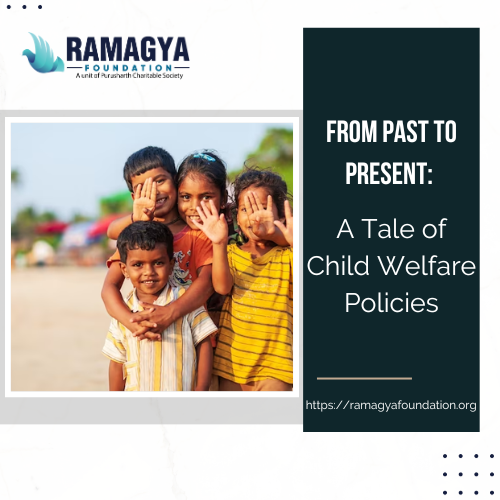Child welfare is a topic that has captivated the hearts and minds of societies for centuries. The welfare of children is a universal concern, and throughout history, governments and communities have worked to ensure the well-being of their youngest members. This blog explores the intriguing journey of child welfare policies worldwide, focusing on the pivotal role of Child Welfare Committees in safeguarding children’s rights and futures.
Ancient Beginnings
Child welfare, in one form or another, has a deep-rooted history. Ancient civilizations, including the Greeks and Romans, recognized the importance of protecting children. Both societies had rudimentary laws to ensure children’s safety and well-being. The Roman concept of “Patria Potestas” granted fathers authority over their children, including the power to protect them from harm.
The Middle Ages
During the Middle Ages, the Church played a crucial role in child welfare. Often attached to monasteries, orphanages provided care and protection for abandoned or orphaned children. While these efforts were rooted in religious beliefs, they laid the foundation for a broader sense of societal responsibility toward vulnerable children.
The Industrial Revolution
The Industrial Revolution brought about dramatic societal changes, including mass migrating families to urban centers. This migration gave rise to child labour, as children often worked in hazardous conditions for long hours. The outcry against such exploitation gave birth to the first child labour laws, marking a significant turning point in child welfare policies.
Early 20th Century
The early 20th century saw the emergence of the concept of the welfare state. Progressive reformers began advocating for laws that protect children’s rights, health, and education. Various countries, such as the United States, have enacted laws establishing child labour regulations and compulsory education. It has set the stage for a more comprehensive approach to child welfare.
Child Welfare Committees: A Modern Approach
In the latter half of the 20th century, child welfare policies took a significant step forward by establishing Child Welfare Committees. These committees serve as dedicated bodies protecting children from abuse, neglect, and exploitation. Their roles include investigating child abuse cases, providing counselling and support, and ensuring children are placed in safe environments.
India’s Example
One of the notable examples of the implementation of Child Welfare Committees is in India. The Juvenile Justice (Care and Protection of Children) Act of 2000[1] marked a significant milestone in child welfare policies. It established the Child Welfare Committee (CWC), which operates at the district level. The CWC’s mission is to ensure that the child’s best interests are upheld, advocating for their protection and rehabilitation.
Global Impact
Child Welfare Committees aren’t unique to India; they have counterparts worldwide. In the United States, Child Protective Services (CPS) plays a similar role, focusing on safeguarding the welfare of children. These agencies investigate allegations of child abuse and neglect, working with other social service organizations to ensure children are in safe and nurturing environments.
Challenges and Progress
Child welfare policies have come a long way, but challenges persist. Issues like child trafficking, child labour, and child abuse remain concerns in many parts of the world. However, the continued efforts of Child Welfare Committees and other organizations have made significant progress in protecting children’s rights and providing them with a safe and nurturing environment.
Child welfare policies have evolved over the centuries, driven by an inherent human instinct to protect the most vulnerable. Child Welfare Committees, like India’s CWC, are modern-day champions for children’s rights, ensuring they grow up in safe, loving, and nurturing environments. As we continue to learn and adapt, we must remain committed to improving child welfare policies and working together to build a brighter future for all children worldwide. After all, the well-being of our children is a reflection of the strength and compassion of our societies.
Read our Article: How NGOs Are Reviving Education System in India
